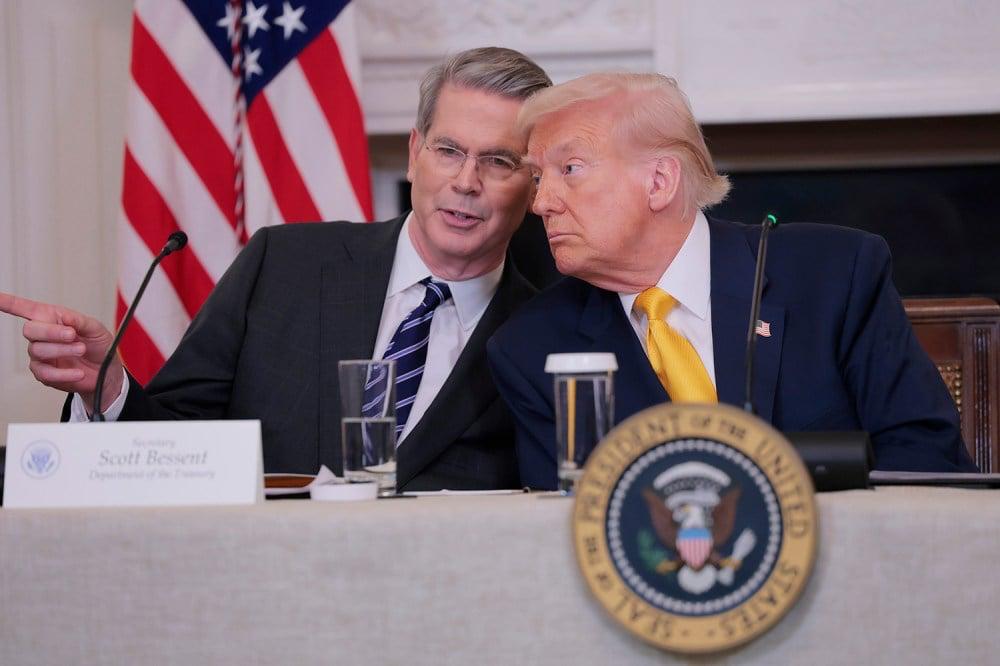As global markets brace for the August 1 tariff deadline, President Donald Trump’s latest remarks reveal a high-stakes balancing act across monetary policy and international trade. With interest rate ambiguity, stalled India negotiations, and renewed momentum with China, Trump’s economic strategy is unfolding in real time—layered with political calculation and global consequence.
Rate Watch: Trump Keeps Fed on Edge
Trump’s cryptic comment—“will see what rate is”—has left analysts parsing his intentions ahead of the Federal Reserve’s decision this week. Despite mounting pressure from the White House, the Fed is widely expected to hold rates steady at 4.25–4.5%, citing inflation at 2.7% and unemployment at 4.1%2.
Fed Chair Jerome Powell has resisted immediate cuts, emphasizing the need for clarity on tariffs and inflation before adjusting policy2.
Governors Christopher Waller and Michelle Bowman have publicly advocated for easing, citing tariff-induced economic drag2.
Trump’s recent visit to the Fed headquarters—only the fourth by a sitting president—underscored his push for sub-1% rates, though Powell remains cautious.
Analysts expect a modest rate cut in September, contingent on trade clarity and inflation trends2.
India Trade Deal: Talks in Limbo, Deadline Looms
Despite months of negotiations, Trump confirmed the India-U.S. trade deal is “not finalized,” casting doubt on whether a resolution will arrive before the August 1 deadline4.
Disputes persist over agricultural access, dairy imports, and tariff levels. India resists zero-duty demands, pushing for a 15% headline rate similar to Japan and the EU4.
Commerce Minister Piyush Goyal insists India will not rush into a deal based on deadlines, emphasizing national interest.
India has not received a tariff letter from Trump, leaving ambiguity over whether the previously announced 26% rate will be enforced.
Secondary tariffs loom: Trump has threatened 100% levies on countries buying Russian oil, which could impact India’s energy imports.
India has offered purchases of U.S. defense equipment, LNG, and nuclear reactors to sweeten the deal, but agriculture and dairy remain off the table6.
China Trade Talks: Bessent Meeting Signals Reset
Trump’s announcement of a “very good meeting” with Treasury Secretary Scott Bessent regarding China trade talks marks a potential turning point8.
Bessent met Chinese Vice Premier He Lifeng in Stockholm for over five hours, aiming to extend the current tariff truce by three months10.
Talks focused on rare earth exports, critical minerals, and tariff rollback. Both sides seek a phased agreement to avoid triple-digit tariffs7.
Trump hailed the meeting as a “total reset,” suggesting groundwork for a future summit with Xi Jinping.
Analysts expect a Trump-Xi meeting in late October or November, contingent on continued progress11.
Strategic Outlook: Global Trade in Flux
Trump’s tariff regime continues to reshape global trade dynamics:
Blanket tariffs of 15–20% are proposed for countries without individual deals.
The EU accepted a 15% rate in exchange for energy purchases and investment pledges, setting a precedent.
India’s delay may expose it to higher tariffs, especially if secondary levies are enforced.
China’s engagement signals a shift from confrontation to cautious cooperation, though technical details remain unresolved7.
Conclusion: Diplomacy Meets Deadline
Trump’s latest moves reflect a volatile mix of strategic ambiguity and assertive negotiation. While the Fed holds its ground, India remains in limbo, and China inches toward détente. With August 1 fast approaching, the global economic landscape braces for the ripple effects of Trump’s trade calculus.
Sources: CBS News, Fox Business, Politico, Indian Express

